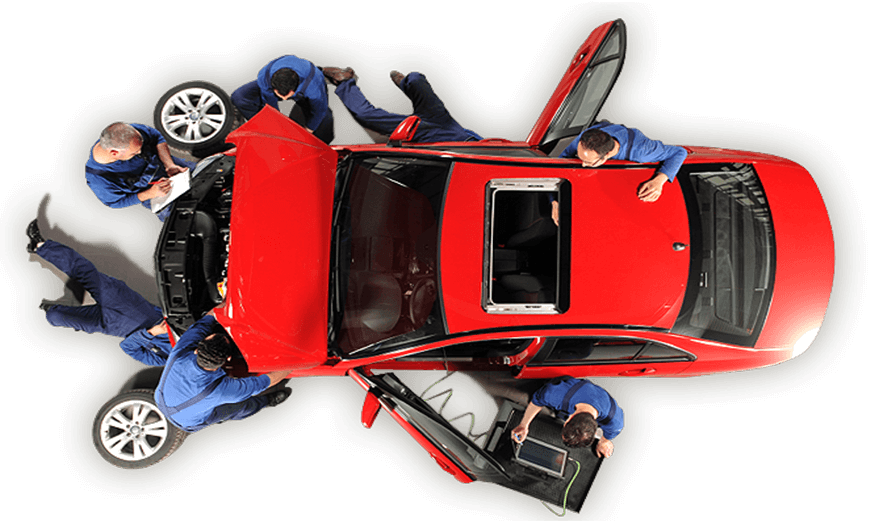

In today’s world, fuel efficiency has become one of the most important factors influencing car design and performance. With rising fuel prices, environmental concerns, and the growing demand for sustainable mobility, automakers are constantly innovating to make modern car engines more fuel-efficient than ever. The combination of advanced engineering, lightweight materials, and smart technology ensures that cars deliver power while consuming less fuel.
In this blog, we’ll dive into how modern car engines are designed for fuel efficiency, the technologies behind them, and what every car owner should know about getting the most out of their vehicle.
Decades ago, car engines were built with a focus on power and performance. Fuel efficiency was often secondary, especially when gas prices were low. However, times have changed. Today, car manufacturers are required to meet strict emission and fuel economy standards, leading to a revolution in engine design.
Modern engines are smaller, lighter, and more intelligent. They produce more power per liter of displacement and operate with far greater precision than engines of the past. Engineers now use computer-aided simulations, advanced materials, and electronic control systems to fine-tune every aspect of the combustion process. The result? Engines that go further on every drop of fuel.
One of the biggest shifts in automotive design is engine downsizing. Instead of large, gas-guzzling engines, manufacturers now use smaller engines equipped with turbochargers or superchargers. These components help smaller engines produce the same - or even greater - power as their larger counterparts.
For instance, a modern 1.5-liter turbocharged engine can easily match the performance of a traditional 2.5-liter engine while consuming much less fuel. This is achieved by compressing the intake air, allowing more fuel to burn efficiently and generating higher power output.
Moreover, smaller engines reduce the overall weight of the vehicle, which further contributes to better fuel economy.
Direct fuel injection (DFI) technology is another cornerstone of modern fuel-efficient engines. Unlike traditional fuel injection systems that mix air and fuel before sending it into the combustion chamber, DFI injects fuel directly into the chamber at extremely high pressure.
This ensures a more precise fuel-air mixture, leading to more complete combustion and minimal fuel wastage. With this technology, engines not only deliver better fuel economy but also emit fewer pollutants.
Additionally, DFI systems allow for multi-point injection and variable timing, optimizing combustion under various driving conditions - whether you’re cruising on the highway or idling in traffic.
Variable Valve Timing (VVT) technology allows engines to adjust the timing of the intake and exhaust valves based on driving conditions. This means the engine can optimize airflow for maximum power when needed and better efficiency during lighter driving conditions.
For example, during highway driving, the engine doesn’t need as much power, so the valves adjust to use less fuel. But during acceleration or uphill climbs, they open wider to provide more power without compromising efficiency.
Almost every modern car manufacturer has its version of VVT - like Honda’s VTEC, Toyota’s VVT-i, or BMW’s Valvetronic. This intelligent system ensures you get the best balance between performance and fuel economy.
Modern engines don’t work in isolation - fuel efficiency also depends on how the rest of the car supports the engine’s performance. Automakers now use lightweight materials like aluminum,
magnesium, and carbon fiber in engine construction and body design to reduce overall vehicle weight.
A lighter vehicle requires less power to move, meaning less fuel consumption.
In addition, aerodynamic design plays a crucial role. Streamlined body shapes, active grille shutters, and smooth underbody panels reduce air drag, helping cars glide more efficiently. Together, these advancements allow engines to operate with less strain and deliver optimal fuel economy.
Stop-start technology has become a common feature in modern vehicles. This system automatically shuts off the engine when the car is stationary - like at traffic lights - and restarts it when the driver presses the accelerator. This simple innovation can save a significant amount of fuel over time, especially in city driving conditions.
Furthermore, mild hybrid systems assist the internal combustion engine during acceleration using small electric motors powered by regenerative braking. This means the engine doesn’t have to work as hard, improving both performance and fuel efficiency.
Modern car engines are controlled by highly sophisticated Engine Control Units (ECUs). These computers constantly monitor various parameters like throttle input, engine load, air temperature, and oxygen levels in the exhaust.
By analyzing this data in real-time, the ECU fine-tunes fuel injection, ignition timing, and valve operation to ensure the engine runs at peak efficiency. This level of precision simply wasn’t possible in older vehicles.
Thanks to these smart systems, drivers enjoy smoother performance, better fuel economy, and reduced emissions - all without sacrificing power.
Even with all the advanced technology, maintaining your car properly remains essential to preserving fuel efficiency. Routine tasks such as changing engine oil, replacing air filters, and ensuring tires are properly inflated make a big difference.
A poorly maintained engine can lose up to 20% of its efficiency due to clogged filters, dirty oil, or malfunctioning spark plugs. Regular servicing ensures that the engine continues to run efficiently and that all systems remain calibrated for optimal performance.
While current advancements have dramatically improved how efficiently engines burn fuel, the future promises even more innovation. The next generation of engines will likely feature variable compression ratios, electrified turbochargers, and even hydrogen-based combustion systems.
Additionally, as hybrid and electric vehicles become more widespread, traditional combustion engines will continue to evolve and work in harmony with electric powertrains to deliver the perfect blend of performance and sustainability.
Modern car engines represent the perfect balance between innovation and efficiency. With cutting-edge technologies like turbocharging, VVT, lightweight materials, and smart ECUs, today’s vehicles deliver powerful performance while conserving fuel.
Understanding these innovations helps drivers appreciate the engineering excellence that goes into every modern engine - and inspires smarter, more eco-friendly driving habits for the road ahead.
Modern engines use advanced technologies like turbocharging, direct fuel injection, and variable valve timing to optimize combustion and reduce fuel consumption without compromising power.
Not always. While smaller engines generally consume less fuel, efficiency also depends on driving style, vehicle weight, and whether the engine uses features like turbocharging or hybrid assistance.
You can improve fuel efficiency by maintaining your vehicle regularly, keeping tires properly inflated, avoiding aggressive driving, and reducing unnecessary idling.
Yes, hybrids combine electric motors with gasoline engines, reducing fuel consumption, especially in stop-and-go city traffic. However, their efficiency depends on usage and maintenance.
Future engines will integrate advanced electrification, hydrogen fuel, and variable compression technologies to deliver even greater efficiency and lower emissions.